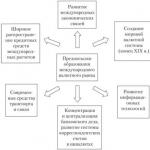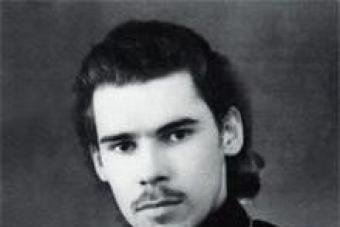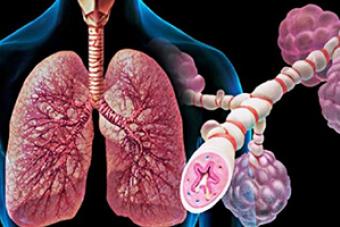Passing through any conductor, gives him a certain amount of energy. As a result, the conductor heats up. Energy transfer occurs at the molecular level, i.e., electrons interact with atoms or ions of the conductor and give up part of their energy.
As a result of this, the ions and atoms of the conductor begin to move faster, respectively, we can say that the internal energy increases and turns into thermal energy.
This phenomenon is confirmed by various experiments, which indicate that all the work done by the current goes into the internal energy of the conductor, which in turn increases. After that, the conductor begins to give it to the surrounding bodies in the form of heat. Here the process of heat transfer comes into play, but the conductor itself heats up.
This process is calculated by the formula: A=U I t
A is the work done by the current as it flows through the conductor. You can also calculate the amount of heat released in this case, because this value is equal to the work of the current. True, this applies only to fixed metal conductors, however, such conductors are most common. Thus, the amount of heat will also be calculated in the same form: Q=U I t.
The history of the discovery of the phenomenon
At one time, the properties of a conductor through which an electric current flows were studied by many scientists. Especially notable among them were the Englishman James Joule and the Russian scientist Emil Khristianovich Lenz. Each of them conducted their own experiments, and they were able to draw a conclusion independently of each other.
Based on their research, they were able to derive a law that allows us to quantify the heat generated as a result of the action of an electric current on a conductor. This law is called the Joule-Lenz Law. James Joule installed it in 1842, and about a year later Emil Lenz came to the same conclusion, while their research and experiments were in no way connected with each other.
Application of the properties of the thermal action of the current
Studies of the thermal effects of current and the discovery of the Joule-Lenz law made it possible to draw a conclusion that pushed the development of electrical engineering and expanded the possibilities of using electricity. The simplest example of the application of these properties is a simple incandescent light bulb.
Its device lies in the fact that it uses a conventional filament made of tungsten wire. This metal was not chosen by chance: it is refractory, it has a rather high resistivity. An electric current passes through this wire and heats it, that is, transfers its energy to it.
The energy of the conductor begins to turn into thermal energy, and the spiral heats up to such a temperature that it begins to glow. The main disadvantage of this design, of course, is that large energy losses occur, because only a small part of the energy is converted into light, and the rest goes into heat.
To do this, such a concept is introduced into technology as efficiency, showing the efficiency of work and conversion of electrical energy. Such concepts as efficiency and thermal effect of current are used everywhere, since there are a huge number of devices based on a similar principle. This primarily applies to heating devices: boilers, heaters, electric stoves, etc.
As a rule, in the designs of the listed devices there is a certain metal spiral, which produces heating. In devices for heating water, it is isolated, they establish a balance between the energy consumed from the network (in the form of electric current) and heat exchange with the environment.
In this regard, scientists are faced with the difficult task of reducing energy losses, the main goal is to find the most optimal and efficient scheme. In this case, the thermal effect of the current is even undesirable, since it is precisely it that leads to energy losses. The simplest option is to increase the voltage during power transmission. As a result, the current strength decreases, but this leads to a decrease in the safety of power lines.
Another area of research is the choice of wires, because heat losses and other indicators depend on the properties of the conductor. On the other hand, various heating devices require a large release of energy in a certain area. For these purposes, spirals are made from special alloys.
To increase the protection and safety of electrical circuits, special fuses are used. In the event of an excessive increase in current, the cross section of the conductor in the fuse does not withstand, and it melts, opening the circuit, thus protecting it from current overloads.
In the premises of the technical complex, when the spacecraft and launch vehicle are located in them, the air temperature is from 8 to 25 °C and relative humidity is from 30 to 85% at 25 °C.
During the transportation of the spacecraft with the launch vehicle from the technical to the launch complex, the temperature of the environment under the nose fairing can be maintained in the range from 5 to 35°C by special means (a heating unit placed on a mobile railway platform and a thermal cover).
When the launch vehicle is on the launcher, the thermal regime of the environment under the fairing is provided in the range from 5 to 35 ° C by a refrigeration and heating unit located on the maintenance unit and a thermal cover.
The refrigerating and heating unit is connected to the fairing by flexible air ducts that provide air circulation in a closed circuit (Fig. 10.1).
The refrigerating and heating unit provides air supply at the inlet to the underflow space with a temperature of:
· at cooling 3 – 5 °С;
· at heating 40 - 50 °C.
The amount of air supplied 6000 - 9000 m 3 / h.
The air temperature at the inlet and outlet of the head fairing is controlled by means of the refrigeration and heating unit with an accuracy of 4°C.
Thermostating stops 90 minutes before the launch of the launch vehicle.
The temperature of the environment of the underflow space directly at the moment of launch of the launch vehicle depends on the weather conditions in the area of the launcher (temperature and wind speed, the presence of precipitation, etc.)
Fig. 10.1. Thermostat circuit for sub-objective space
The thermal effect on the spacecraft in flight on the active part of the trajectory is due to various reasons.
Before the head fairing is dropped, the spacecraft is heated under the action of a heat flux from the inner surface of the fairing. It is a consequence of the heating of the fairing shell, mainly due to friction against the air, during the passage of dense layers of the atmosphere at high speed.
The temperature field of the head fairing shell is significantly non-uniform. Its conical part is the most heated. The cylindrical part of the fairing due to the high thermal conductivity of the materials of the power set and the shell itself is heated relatively evenly. Therefore, to assess the degree of thermal impact on the spacecraft from the side of the cylindrical part of the fairing, the average value of the heat flux can be used.
The amount of heat flux from the fairing depends on the emissivity factor (e) of the inner surface and varies with the flight time, reaching a maximum value at about 130 seconds. The discharge of the head fairing is usually carried out at an altitude of about 75 kilometers with a velocity head of the order of 14 kg/m 2 . In this case, the maximum heat flux for the fairing (made with a coefficient e £ 0.1) does not exceed 250 W/m 2 .
After the head fairing is dropped, the spacecraft is heated under the action of the total heat flux due to collision with air molecules and atoms and recombination of oxygen atoms. This thermal effect can be estimated by the value of the heat flux density on the surface of the spacecraft, perpendicular to the velocity vector.
The thermal effect on the spacecraft after the nose fairing is dropped depends on the shape and size of the spacecraft, as well as on the type of launch of the spacecraft (associated or target). In this regard, the amount of thermal effect on the spacecraft is finally specified individually for each spacecraft, taking into account its design features and program excretion.
The heat flux to the side surfaces of the spacecraft usually does not exceed 100 W/m 2 .
Stress impact. Thermal procedures of sufficient strength, especially a bath, have a stressful effect on the human body. If you use it wisely, you can activate the defenses and strengthen the body. So, a moderate bath shakes, renews, tones the human body. That is why you leave the bath in a great mood. Elderly people especially need such a physiological shake-up. This will significantly activate their body, maintain vigor and strength until old age.
On the skin. Exposure to heat (as well as cold) on the skin means:
a) impact on the largest organ in the human body. The skin is about 1.5 mg of tissue, 20% of a person's total weight;
b) impact on natural defenses. Our skin is the “front line of defense” of the human body. Directly comes into contact with the environment. It protects our vessels, nerves, glands, internal organs from cold and overheating, from damage and microbes. The skin contains the substance lysozyme, which is detrimental to many bacteria;
c) impact on the respiratory and water-excretory function of the skin. The skin breathes, which means it helps the lungs. Water is released through it, which facilitates the work of the kidneys. With its help, we are freed from toxins;
d) effect on the sebaceous glands. The sebaceous glands have an exit to the outside in the form of pores, lubricating our skin with a thin layer of a special emulsion that softens, protects it from drying out, gives elasticity, firmness and shine. If the sebaceous glands function poorly, then the skin suffers, and the body suffers with it;
e) protection against infections. The human body in the fight against infection is able to produce antibodies - an antidote that not only kills bacteria, but also disinfects the poisons they secrete. This protection continues to operate even when you recover. This is how immunity to disease arises - immunity, in the formation of which, as the latest studies have shown, the skin participates in the most active way. But the skin can do this only when it is clean and healthy. Clean, healthy skin counteracts the constant aggression of microbes. Infection through the skin is possible only when it is contaminated. Research scientists have shown that microorganisms on clean skin quickly die;
e) the formation of dirt on the skin. Recently, Danish microbiologists have found dust mites only 30 microns in diameter that feed on dead skin particles and cause a form of asthma. Mixing with sweat, constantly secreting sebum and scales of the dead stratum corneum, these dust particles form what we call dirt. Dirty skin loses elasticity, becomes defenseless. Inflammation, suppuration are most often caused by staphylococci;
g) causes of skin diseases. Many skin diseases are the causes of the release of toxic contents of the body from the inside out. So the body fights against the poisonous substances accumulated in it, if the excretory organs cannot cope. Therefore, so that the bath heat does not act on the skin like a “vacuum cleaner”, through which the toxic contents of the body are removed, carry out a preliminary cleaning of all the most important body systems - the intestines, liver, fluid media;
h) cleansing. Strong pleasant heat (bath), like no other hygiene product, opens and thoroughly cleans all the pores of the body, removes dirt. Gently removes obsolete, dead cells from the top layer of the skin. It is useful to know that in just one day a person, on average, dies and recovers a twentieth of the cells of the skin. Thus, the moist heat of the bath helps the self-renewal of the skin;
i) bactericidal effect of heat. The heat of the sauna and bath has a bactericidal effect. The heat and microbes on the human body perish in this;
j) cosmetic effect. Hot and wet procedures allow you to increase blood flow, train the vessels adjacent to the skin. From this, the skin looks not only more attractive, but its physiological properties also improve. She is not afraid of temperature changes. In addition, her tactile ability increases.
Saturation of the body with moisture and heat. One of the features of the phenomenon of life is the constant struggle of the body to maintain the optimal amount of moisture and heat. Judge for yourself: a three-day-old human fetus is 97% water, an adult is almost two-thirds of its weight, and an old person is even less. An adult under normal conditions exhales about 25.5 g of water in 1 hour (this is about 600 g per day). Over the years, any person loses water and heat, and with them the vitality goes. A wet bath procedure allows the human body to replenish both. As a result of this, vital manifestations in the human body are restored. This is especially useful for the elderly and old people.
Influence on blood circulation in general. As previously stated, heat strongly stimulates the circulatory processes in the body. The main circulating fluid in the body is blood. Therefore, the activity of the heart is activated, the blood quickly circulates through the body, irrigating all organs and systems without exception. That is why simple warming up helps to get rid of stagnant blood simply and effectively. Health, the body's resistance to external and internal adverse factors largely depend on blood exchange. And with age, blood circulation tends to decrease. So, after examining the blood exchange in 500 people, it was found that, on average, in 18-year-olds, 25 cm3 of blood passes through 1.5 cm3 of muscles. By the age of 25, the amount of blood circulating in the muscles is reduced by almost half. The blood supply to the muscles is especially reduced in those who lead an inactive lifestyle. What is especially valuable, as a result of heating the body, reserve blood comes into motion, of which a person has 1 liter (out of 5-6 liters). Reserve blood, rich in valuable nutrients, provides excellent nutrition to the cells of the body. At the beginning of warming up the body, blood pressure rises slightly. And then - due to the expansion of blood vessels - it decreases.
Effect of heat on capillary circulation. If we consider the circulatory system, then 80% of all circulating blood in the body is in the capillaries. The total length of the capillaries is about 100 thousand kilometers. The capillary system is a kind of vascular skeleton that irrigates every cell of our body. In every poorly functioning organ, as a rule, there is a spasm of capillaries, their expansion or narrowing. Any disease-causing process is, first of all, a violation of capillary circulation. The heat of the bath increases the circulatory processes in the body, relaxes spasms in tissues and organs, which helps to restore normal blood circulation, and therefore restores the functioning of an organ or tissue.
Effect of heat on the blood picture. Academician I. R. Tarkhanov proved that after the bath procedure, the number of red blood cells and hemoglobin increases. The latest research has confirmed this discovery. Under the influence of the bath procedure, the number of leukocytes - white blood cells involved in the immune defense of the body - also increases.
Effect of heat on the heart. Under the influence of the heat of the bath procedure, the work of the heart muscle is activated. The strength of her contractions increases. Regular steam bath leads to the training effect of the heart muscle. This has been confirmed experimentally. A group of men aged 30-40 was offered a test to determine the work of the heart muscle - to climb as quickly as possible without an elevator to the 12th floor. The time spent on this ascent, heart rate and respiration, as well as the recovery time for these indicators were recorded. Then all participants in the experiment were divided into two groups. One group began jogging twice a week, the other visited the bathhouse the same number of times a week, where contrast effects were used: four or five visits to the steam room for 5-7 minutes, followed by pouring cold (12-15 ° C) water into for 20-40 s and 1-2 min warm (35-37°C). Between each entry into the steam room rest 5-7 minutes. Three months later, the control test was repeated (ascent to the 12th "floor without an elevator). For those who went in for jogging and those who took a steam bath, the positive changes turned out to be approximately the same. All participants in the experiment significantly reduced the time to climb, and at the same time, representatives of both groups showed a more favorable reaction of the cardiovascular and respiratory systems. But what is very important, the recovery time of functions has decreased dramatically, especially for those who visited the bath.
Effect of heat on metabolism. The difficulty of heat transfer by the body causes the activity of blood circulation. Increased blood circulation, in turn, leads to an increase in body temperature. An increase in temperature affects the increase in the activity of redox enzymes in cells. As a result, oxidative processes are activated in the body. Rapid blood circulation, the release of a reserve amount and an increase in hemoglobin in it allow more oxygen to be delivered to the cells. This, in turn, stimulates the processes of oxidation of substances. This is how the bath procedure increases metabolism by about one third. Nutritional substances are better absorbed, toxins are oxidized and excreted from the body. The activity of enzymes, increased metabolism lead to the fact that a person has a healthy appetite. This allows you to normalize many deviations in the work of digestion, increase the digestibility of nutrients.
Effect of heat on respiratory function. The bath perfectly stimulates breathing. Hot humidified air affects the larynx and mucous membranes of the nose. Since the increased metabolism during the heat requires oxygen, breathing becomes faster, deeper, and this in turn improves air exchange in the pulmonary alveoli. The ventilation of the lungs in comparison with the indicators before the bath increases by more than two and a half times. After the heat of the bath, you breathe better because the pores of the skin are cleansed, toxic contents are removed from the blood, and blood circulation is improved. After the bath procedure, oxygen consumption increases by an average of one third.
Effect of heat on the endocrine glands. Improvement of blood supply, metabolism and respiration, removal of toxins as a result of the bath procedure stimulates the endocrine glands, as a result of which the activity of organs and body systems is better regulated and coordinated.
Improving the mental state of a person. When the human body improves its functioning as a result of the above actions of heat, then the person feels comfortable. This leads to the fact that now nothing irritates the person, and he psychologically rests. In addition, the heat of the bath relieves fatigue, which gradually accumulates by the end of the week. Lactic acid is removed from the muscles with sweat, which aggravates the feeling of fatigue. Bath heat, warming up the skin, muscles, various tissues and organs, causes a pleasant relaxation. Relaxation and warming up is the main thing that is necessary for a favorable restoration of vitality. All this creates a winged, optimistic mood. When the body is relaxed and there is no stiffness, a healthy, serene sleep occurs.
Steam room and increased visual acuity. Warmth is one of the functions of the vital principle "Bile", which controls, in addition to digestion, the function of vision. Therefore, it is not surprising that as a result of the use of a steam room, the function of vision improves in a person. Scientists in their studies of the bath procedure only confirmed this provision of Ayurveda.
Fever and infections. The threshold of temperature sensitivity of a number of pathogenic microbes is below the threshold of temperatures that the cells of the human body can tolerate. Therefore, temperature increase (sauna, steam room) is widely used for the treatment of a number of infectious diseases.
Based on the materials of the book by G.P. Malakhov "Fundamentals of Health"
Acclimatization to high temperatures, such as in the tropics, can last from two weeks to months. At the same time, sweating increases, but little salt leaves the body. Red (tropical) miliaria (climatic hyperhidrosis) is the result of inflammation of the sweat glands under the influence of high temperatures.
Climatic hyperhidrosis manifests itself in the form of itchy, red or pink rashes, mainly affecting the head, neck, shoulders and places of increased sweating - the armpits and groin, which become even more inflamed from contact with clothing and heat. Diaper rash is more common in babies. You can help prevent skin irritation by taking frequent cool showers, using talcum powder to keep your skin dry and cool, and choosing loose-fitting clothing made from lightweight materials. If treatment is needed, use emollient creams or a low concentration hydrocortisone cream.
Heat exhaustion, a mild form of heat stroke, occurs when the body has not fully acclimatized and overheated, especially if it was accompanied by heavy physical exertion. Characteristic symptoms: dizziness, headache, nausea, weakness, fatigue and faintness. Body temperature can rise to 40°C, leading to dehydration and delirium. In addition, profuse sweating continues. In this state, you can not be in the sun. It is necessary to do wiping with cold water, take a cool bath and create a cool air flow (for example, with a fan). The victim should drink plenty of fluids and take paracetamol for headaches.
Sunstroke poses a serious threat to life. A similar problem often occurs in hot, humid climates and affects people whose bodies have not adapted to weather conditions. First of all, people at risk are aged, diabetics, lovers of alcoholic beverages. The body temperature can rise to 41°C and the victim will feel headache, weakness, nausea, and react painfully to light. Sunstroke is characterized by rapid breathing and rapid pulse, red skin, and a feeling that you are on fire (but not sweating). Sunstroke leads to a state of delirium, and then coma occurs. Since such a condition can lead to death, it is urgent to seek medical help.
Belladonna 30C (3 doses 1 hour apart, then no more than 3 doses for the remainder of the day) is a useful homeopathic remedy for sunstroke if you have a fever, dark red face, often with a luster, cloudy eyes and dilated pupils. The remedy helps well with high fever, a state of delirium and even hallucinations. If you have severe headaches, then it is better to take a sitting position, as lying down can become even worse. There should be no light and noise, long hair should be loose. If you are lying down, place a pillow under your head.
The Disneyland Dilemma (life story)
As grown-up kids, my husband Barry and I (both in our late 70s) were planning a trip to Florida for a couple of weeks, which of course meant going to Disneyland.
Mid-May is the best time when the weather is still not too hot - at least we thought so. Our hotel in Orlando was located very close to the attractions, from here there were regular buses to Disneyland and other interesting places.
Armed with wide-brimmed hats, sunglasses, lotion and a supply of bottled water, we spent the first two days exploring the area before heading to the coveted Magic Kingdom. The next morning, I felt a little out of sorts, but didn't complain, and we got back on the bus to Disneyland. On the way, I dozed off, feeling more and more strange. It was hard to describe: as if I was here and not here. Dizziness and blurred vision did not allow a clear understanding of what was happening. Upon arrival, we had to urgently look for a bench (and by this point I was no longer able to walk without assistance), and although I still could not complain about anything specific, it was clear that I needed medical attention. We went to the ambulance station, and I was immediately transported from there to the hospital. My legs were covered with a bright red rash, and the doctor insisted on a full examination. How could this happen despite all the precautions?!
It turns out that the sun's rays reflecting off the ground and falling on your feet are no less dangerous than those that fall directly from the sky - especially for older people! I was put on a hydrocortisone ointment to relieve the irritation, and I was taken by ambulance to Orlando, where I had to spend the whole day in a shaded room, constantly swallowing cold water. Despite my annoyance at the lost time, I had to comply and learn from the lesson. I no longer risked walking in the sun in short shorts, which allowed us to spend unforgettable days in Florida.
The sources of the thermal effect of the current can be high-frequency currents, metal objects and resistors heated by the current, an electric arc, bare current-carrying parts.
chemical action.
The human body consists of non-polar and polar molecules, cations and anions. All these elementary particles are in continuous chaotic thermal motion, which ensures the vital activity of the organism. Upon contact with current-carrying parts in the human body, instead of the chaotic, a directed, strictly oriented movement of ions and molecules is formed, which disrupts the normal functioning of the body.
secondary injury.
A person's reaction to the action of the current usually manifests itself in the form of a sharp involuntary movement, such as pulling the hand away from the place of contact with a hot object. With such a movement, mechanical damage to organs is possible due to falling, hitting nearby objects, etc.
Consider the different types of electrical shocks. Electric shock is divided into two groups: electric shock and electric injury. Electric shock is associated with damage to internal organs, electrical injuries - with damage to external organs. In most cases, electrical injuries are cured, but sometimes, with severe burns, injuries can lead to death.
There are the following electrical injuries: electrical burns, electrical signs, skin plating, electrophthalmia and mechanical damage.
electric shock- this is a defeat of the internal organs of a person: the excitation of the living tissues of the body by an electric current flowing through it, accompanied by an involuntary convulsive contraction of the muscles. The degree of negative impact on the body of these phenomena can be different. In the worst case, an electric shock leads to disruption and even complete cessation of the activity of vital organs - the lungs and heart, i.e. to the death of the body. In this case, a person may not have external local injuries.
Causes of death due to electric shock include cardiac arrest, respiratory failure, and electrical shock.
The cessation of the heart, as a result of the effect of current on the heart muscle, is the most dangerous. The cessation of breathing can be caused by a direct or reflex effect of the current on the chest muscles involved in the breathing process. Electric shock is a kind of severe neuro-reflex reaction of the body to strong irritation with an electric current, accompanied by deep disorders of blood circulation, respiration, metabolism, etc.
Small currents cause only discomfort. At currents greater than 10 - 15 mA, a person is unable to independently get rid of current-carrying parts and the action of the current becomes prolonged (non-release current). With prolonged exposure to currents of several tens of milliamps and an action time of 15–20 seconds, respiratory paralysis and death can occur. Currents of 50 - 80 mA lead to cardiac fibrillation, which consists in random contraction and relaxation of the muscle fibers of the heart, as a result of which blood circulation stops and the heart stops.
Both with respiratory paralysis and with paralysis of the heart, the functions of the organs are not restored on their own, in this case, first aid is necessary (artificial respiration and heart massage). The short-term action of large currents does not cause either respiratory paralysis or cardiac fibrillation. At the same time, the heart muscle contracts sharply and remains in this state until the current is turned off, after which it continues to work.
The action of a current of 100 mA for 2 - 3 seconds leads to death (lethal current).
burns occur due to the thermal effects of current passing through the human body, or from touching very hot parts of electrical equipment, as well as from the action of an electric arc. The most severe burns occur from the action of an electric arc in networks of 35 - 220 kV and in networks of 6 - 10 kV with a large network capacity. In these networks, burns are the main and most severe types of injury. In networks with voltages up to 1000 V, electric arc burns are also possible (when the circuit is turned off by open switches in the presence of a large inductive load).
electrical signs- these are skin lesions in places of contact with electrodes of a round or elliptical shape, gray or white-yellow in color with sharply defined edges (D = 5 - 10 mm). They are caused by the mechanical and chemical actions of the current. Sometimes they do not appear immediately after the passage of an electric current. The signs are painless, there are no inflammatory processes around them. Swelling appears at the site of the lesion. Small signs heal safely, with large signs, necrosis of the body often occurs (usually hands).
Skin electroplating- this is the impregnation of the skin with the smallest particles of metal due to its splashing and evaporation under the influence of current, for example, when an arc is burning. The damaged area of the skin acquires a hard, rough surface, and the victim feels the presence of a foreign body at the site of the lesion.
Factors affecting the outcome of electric shock
The impact of current on the human body in terms of the nature and consequences of the lesion depends on the following factors:
electrical resistance of the human body;
the magnitude of voltage and current;
duration of current exposure;
frequency and type of current;
the path of current through the human body;
The state of human health and the factor of attention;
environmental conditions.
The amount of current flowing through the human body depends on the contact voltage U pr and the resistance of the human body R h.
resistance of the human body. The electrical resistance of different parts of the human body is different: dry skin has the greatest resistance, its upper stratum corneum, in which there are no blood vessels, as well as bone tissue; significantly lower resistance of internal tissues; blood and cerebrospinal fluid have the least resistance. Human resistance depends on external conditions: it decreases with increasing temperature, humidity, and gas contamination of the room. The resistance depends on the condition of the skin: in the presence of damaged skin - abrasions, scratches - the resistance of the body decreases.
So, the upper stratum corneum of the skin has the greatest resistance:
· when the stratum corneum is removed;
· with dry undamaged skin ;
with hydrated skin.
The resistance of the human body, in addition, depends on the magnitude of the current and the applied voltage; on the duration of current flow. contact density, area of contact with current-carrying surfaces and paths of electric current
For the analysis of traumatism, the resistance of human skin is taken. With an increase in the current passing through a person, its resistance decreases, because at the same time, the heating of the skin increases and sweating increases. For the same reason, R h decreases with increasing duration of current flow. The higher the applied voltage, the greater the human current I h, the faster the human skin resistance decreases.
The magnitude of the current.
Depending on its magnitude, an electric current passing through a person (at a frequency of 50 Hz) causes the following injuries:
· at 0.6 -1.5 mA - slight hand trembling;
At 5-7 mA - cramps in the hands;
At 8 - 10 mA - convulsions and severe pain in the fingers and hands;
At 20 - 25 mA - paralysis of the hands, difficulty breathing;
At 50 - 80 mA - respiratory paralysis, with a duration of more than 3 s - heart paralysis;
· at 3000 mA and with a duration of more than 0.1 s - respiratory and heart paralysis, destruction of body tissues.
The voltage applied to the human body also affects the outcome of the lesion, but only insofar as it determines the value of the current passing through the person.





